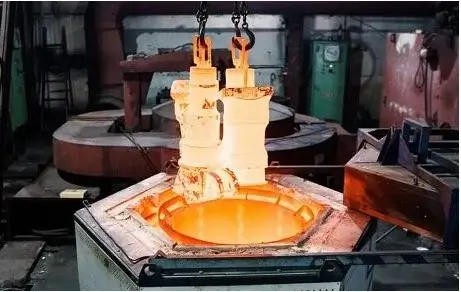In modern metalworking, metal hardening is widely used , which is practically necessary to significantly improve the performance properties of metal products. And today we are looking at the main types of hardening and their specific features.
CEMENTATION
Cementation is a traditional method of carburization, which consists in saturating the surface layers of a steel part with carbon to improve its mechanical characteristics. This technology is used for processing steel, as well as some metals and alloys. During the carburization process, the metal is heated in the presence of a carbon-rich environment, which allows carbon atoms to diffuse into the surface of the metal. The result is a hardened outer layer, while the core remains relatively soft and ductile. Some key points of case hardening include:
- Increased surface hardness and wear resistance.
- Increased fatigue strength.
- Comprehensive increase in all overall mechanical properties.
Carburizing is typically applied to mild steel components that require improved surface wear resistance and fatigue life.
NITRIDING
Nitriding is another traditional method of carburization, which consists in enriching the surface layer of a metal part with nitrogen. This process significantly improves the metal's wear resistance, fatigue strength and overall mechanical properties. The nitriding process involves heating a metal in the presence of a nitrogen-rich gas or ammonia, which allows nitrogen atoms to diffuse to the surface of the metal. Unlike carburization, nitriding does not require hardening, which results in reduced deformation and increased dimensional stability. Some key points of nitriding include:
- Significant surface hardness.
- Improved fatigue strength combined with corrosion resistance.
- Reduced deformation compared to other hardening methods.
Nitriding is commonly used in the automotive, aerospace, and tool industries to improve the performance of steel components.
CYANIDING
Cyanidation is another traditional carburization process that involves saturating the steel surface with carbon and nitrogen. This method is similar to carburizing and nitriding, but uses a cyanide salt bath to introduce carbon and nitrogen to the surface of the metal. After cyanidation, the steel is hardened and tempered to achieve the desired mechanical properties. Some key points regarding cyanidation plating include:
- Increased surface hardness and wear resistance.
- Increased fatigue strength and corrosion resistance.
- Reduced time processing compared to carburizing and nitriding.
Cyanidation is primarily used in the production of gears, cams and other components requiring a combination of wear resistance and fatigue strength.
ANNEALING
Annealing is one of the main methods of strengthening metals by heat treatment. It involves heating a metal to a certain temperature, holding it at that temperature for a certain period, and then slowly cooling it. This process changes the microstructure of the metal, resulting in increased ductility and decreased hardness. There are several subtypes of annealing, including homogenizing annealing, in which the chemical composition of the metal is distributed more evenly, and relaxation annealing, which relieves internal stresses within the material.
NORMALIZATION
Another traditional method of heat treatment of metals for the purpose of hardening is normalization. This process is similar to annealing, but involves cooling the metal more quickly, usually in still air. Normalization is primarily used to improve the grain structure of a metal and improve its mechanical properties such as strength and toughness. The main difference between normalization and annealing is the cooling rate, which determines the final microstructure and properties of the material.
CONVENTIONAL HARDENING
Conventional hardening is the most common method of heat treatment of metal . In this process, the metal is heated to a certain temperature and then quickly cooled by immersion in a liquid, such as water, oil, or a polymer solution. The rapid cooling process results in a harder, more brittle material. To reduce brittleness and improve other mechanical properties, quenching is often followed by tempering, which involves reheating the metal to a lower temperature and then slowly cooling it. Quenching can be carried out in a variety of environments, including controlled and oxidizing atmospheres.




